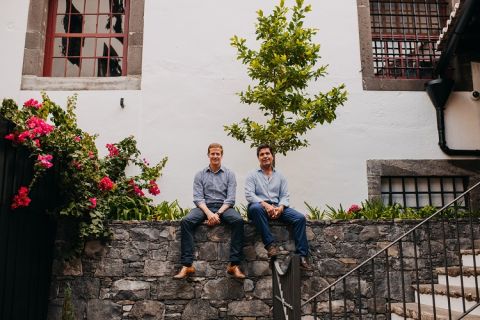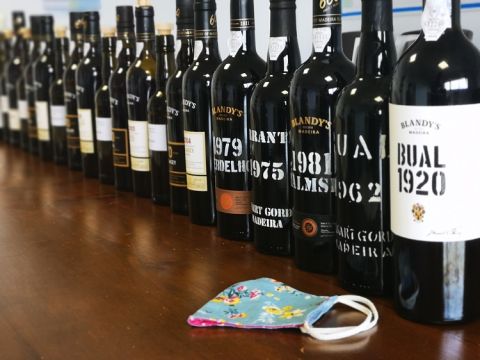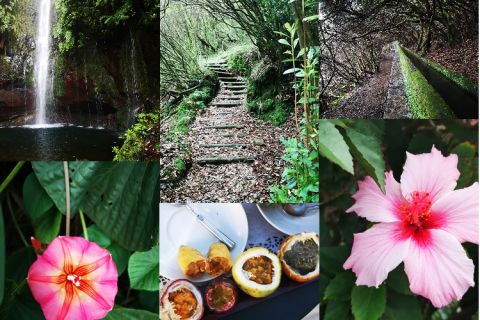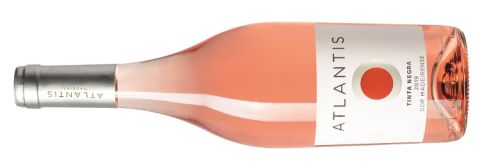From €7.16, $11.99, £10.45, CA$24.99
It seems a little out-of-kilter to be recommending a rosé in the middle of deep winter in the northern hemisphere. I look out my window from where I sit at my desk and the sky is low and iron grey, the wind – which sliced my breath away when I took the dog for a walk earlier – is bending the plum tree, and some of last night’s frost still clings to the roof of the garden shed. The garden is bare, twiggy, bony. The most colourful thing in my eyeline is the periodic-table-of-elements mouse pad under my right hand. We’re in lockdown, the virus is raging, and Brexit has Dutch customs officials confiscating ham sandwiches from British lorry drivers. Is this really the mood for rosé?
Allow me to argue the case. First, I’ve always maintained that rosé is for food not summer – especially the good rosés, made to be wine rather than alcopop substitutes. Second, we could all do with a bit of colour in our lives right now. Third, Valentine’s Day is coming up – some of you might want a bit of pink to symbolise romance. Who cares if it’s a cliché? Fourth, this particular rosé conjures up a bit of an escape, and for those confined by the virus, a vinous escape might be just the ticket.
But the fifth reason is the real reason I’m writing about this surprising wine. A cheap pink table wine made from the 'workhorse' Tinta Negra grape grown on the island of Madeira should not, in theory, be as delicious as this.
My husband and I managed to get on a plane to Madeira less than 12 hours before the portcullis of Tier 4 came down on southern England, banning international travel. Armed with COVID-negative certificates, a bagful of masks, the MadeiraSafe app and swimming costumes, we arrived at the most organised, disciplined and strictly COVID-controlled airport imaginable.
Once out of Funchal airport, the first thing that greeted us was a wide blue sky, then great gulps of clean sea air, then riotous banks of red hot poker plants and bougainvillea tumbling down the steep hillsides.
I was all set for two weeks of fish and madeira wine – the fortified stuff. I’d never tasted Madeiran table wine, but we were taught by the WSET that it was truly terrible and nothing else I’d read since had tried to convince me otherwise. Madeira grapes are as famous for their high acidity as UK grapes are. The table wines were, we were told, thin, acidic, weedy and painful to drink.
So it was quite some surprise, when I met up with Chris Blandy and chief winemaker Francisco Albuquerque, that the tasting laid out for me began with a rosé table wine. At the other end of the table was a Bual 1920… surely no point in wasting time with DOP Madeirense pink?
Contrary to my expectations, the taste of that humble little rosé, roughly 87 times less than the price of the 1920 Bual, stayed with me. When we went to the marina for a delicious octopus lunch, I asked if they had the Atlantis rosé. I wanted to try it again. They didn’t, but I found several more opportunities to try it while we were in Madeira – both the 2018 and 2019 vintages. Each time, it was just as delicious as I had remembered.
We tried it on a rainy day, with pork ribs, at our little Airbnb in Ponta da Sol. We had it on Christmas Day with simple barbecued prawns and octopus and a salad made with local veg (half of it was drunk in a bit of a downpour when we had to dive for cover, and half of it on the balcony in warm sunlight). We tried it with local scabbard fish and tuna tartare, and we drank it with Madeiran Broas de Mel honey biscuits and bananas from our hosts’ garden on a picnic in the mist up in the UNESCO-protected, ancient laurisilva forest – complete with freezing-cold, wet bums perched on the mossy stone walls of the levadas (see below).
We had a chance to compare it with several other Madeirense rosés: Barbusano, Colombo and one other which I shamefully failed to make a note of. The Atlantis was easily superior. But my burning question was: am I tasting the giddy sense of escape, island paradise and sunshine or am I actually tasting the wine?
I brought a bottle home. It’s every bit as good as it tasted in situ. Whether it’s the volcanic rocks, the salty Atlantic winds or the light that not only comes from one of the widest skies I’ve seen but bounces off the ocean, Madeiran wines and veg/fruit just seem have the most vivid intensity of flavour. It’s possibly to do with the acidity, but it’s more than just that. I swear their electrons vibrate more.
The total acidity of the Atlantis rosé is a cracking 8.71 g/l, and the pH is 3.14 – most wines would taste searingly tart at those numbers. But Albuquerque has been smart enough not to fear the anti-sugar brigade and he’s left a residual sugar of 7.5 g/l. This has resulted in a wine with perfect balance, so although the fruit is ripe and present to begin with, the RS fills it out and accentuates tropical depth. The finish, however, is dry and elegant.
Perhaps the secret is that most of the grapes come from the warmer, south side of Madeira – Câmara de Lobos, an old fishing village where during the day the harbour is creaking with wooden fishing boats that go out at night to catch the very ugly, local black scabbardfish, and next-door village Campanário. There is sunshine in those villages – I’ve felt it myself.
Tinta Negra grapes (100%) have given the wine good depth of colour, neither self-consciously wan nor robustly pink. It tastes of guava and tamarillo with an interesting but subtle line of manuka honey, finishing bright with strawberry and a cream-of-tartar tang. It has buckets more complexity than would normally be delivered at this price. Best of all, it has that volcanic-mineral spine, mouth-watering and moreish, and making it the most delicious partner for food. And it registers only 10.5% on the alcohol content (you could almost drink it for breakfast!).
For those of us trying to warm up with soups and stews and comforting winter food, this would be a cracker with hot-and-sour tofu soup, a curry, goulash (or anything with sweet/smoky paprika spice), fish pie, carbonara or a ham bake. For summer, the possibilities are endless.
Blandy’s made only 40,200 bottles of the 2019, but they’ve managed to get the wine to the UK, Canada and the USA (Pennsylvania, Washington DC and North Carolina), and you can, of course, buy it in Madeira and Portugal. In fact, if you can somehow teleport yourself to Funchal, your can pick it up at the Blandy's wine shop for an almost laughably cheap €6.75. Fareham Wine Cellar sells the 2019 for an extremely good-value £10.45. The 2018 is also available in all four countries, and thanks to the firm acidity and good fruit, if you snap it up now it should still be beautifully fresh.


















